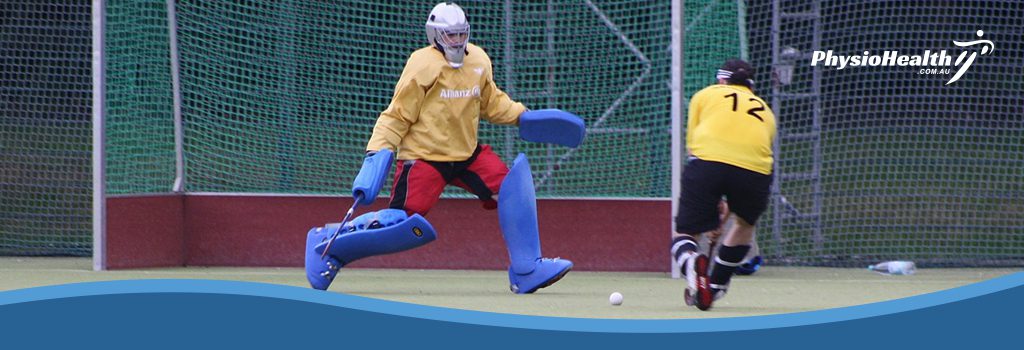Hockey is a popular international Olympic sport. In Australia, hockey is played at clubs, schools and indoor centres. Statistics from the Australian Sports Commission showed an estimated 200,000 Australians aged 15 years and older play outdoor hockey. Hockey requires great technical and physical skills of its players. During the course of play, players accelerate, decelerate and change direction all whilst trying to hit, pass, stop/trap or dribble the ball. As a result, injuries can and do occur.
What are the causes and types of hockey injuries?
Typical causes of hockey injuries can include being struck by the ball or stick, contact with the playing surface (burns and scratches) and contact with other players. Injuries to the fingers/thumb, knee, ankle, thigh and head/face are most frequent. Other types of injuries include bruising and muscle strains or tears. Back pain can also be experienced. More serious injuries, such as broken bones, concussion and ligament ruptures, are less common.
Factors that increase your risk of injury
- Not wearing protective equipment
- Poor physical conditioning
- The amount and level of participation, weekly load
- Pre existing back issues
- A recent sports injury in the previous 12 months
- Poor rehabilitation from a previous injury
Tips to help prevent hockey injuries
- Wear appropriate hockey shoes that have good grip and stability.
- Undertake a specific training program, preferably designed by a qualified exercise or sports professional. This includes a training program to develop skills and techniques before competition as well as fitness program to develop endurance, strength, balance, coordination and flexibility.
- Use the right size hockey stick, which can be bought a speciality shops
- Use personal safety equipment such as mouth guards, shin guards and gloves
- Avoid playing with a pre-existing illness or injury.
- Always warm up, stretch and cool down, especially the lower back.
Why is pre-season screening important?
Pre-season screening has shown effectiveness in the prevention and occurrence of injuries by identifying areas of improvement. It is recommended that all hockey players undergo a pre-season screening for general strength, speed, power, flexibility and endurance. At PhysioHealth, we can complete these screenings for you.
Pre-season conditioning and fitness program
Overuse injuries are frequent in hockey, affecting mostly the ankles and lower back. Pre-season screening for pre-existing conditions, or for weaknesses in strength or flexibility is important to reducing the risk of injury. Pre-season conditioning, with particular attention to improving strength, speed, power, flexibility and endurance, can help the player prepare for the physical demands of the game. Warming-up and stretching, which are known to improve the range of motion of the joints and improve muscle elasticity, are recommended.
Injuries during games or training
- Players should seek immediate attention for their injuries from a professional with first aid qualifications.
- When an injury occurs use the PRICER method for initial treatment.
- Players should allow enough time for adequate rehabilitation of injuries. For example. full recovery of ankle function, before returning to pre-injury levels of play.
Please contact your closest PhysioHealth clinic to arrange a musculoskeletal screening to reduce your risk of injury and enhance your performance.

